Creativity as Home
Embracing my creative self as my true self

Curiosity runs my world. I am nearly always asking a question, even more to myself than anyone else. For a long time, I felt as burdened as I did excited by my questions. There is a large void in not knowing, which can feel dark and pressurized when in search of all the answers at once. But there is an alternative to the fear that can mount throughout our unsolved mysteries, and I discovered it through making clothes.

Seeking to understand has been my core motivator since long before I could identify it. As a child, I remember constantly questioning daily happenings that seemed to be widely accepted as normal. I wondered why adults were talking to me like I was a child. I wondered why no other kid struggled to finish crafts on time while I was just getting started. I felt different from other kids, but I wasn’t play averse. I actually always wanted to be at play, so earnestly that it could be confused with being serious. Fun wasn’t the goal of play; creating was the goal, which was and is my ultimate fun. My journey of creating something out of ‘nothing’ began early, saving boxes to make a dollhouse or transforming dominoes into a car. In this world, I was allowed to ask all the questions that seemed otherwise strange or off-limits. I’m increasingly grateful for the freedom I was given to explore, and the encouragement of conventionally weird ideas that felt natural to me. No doubt, that support has been tremendously influential in keeping my craft, my play, alive.

For as long as my memory allows, creativity has served me as both a safety net and boundless universe. I have always known that I can trust my inclination to make, and that if I’m loyal to the process, goodness will eventually follow. Amongst many uncertainties I have and still do face, creativity has always been a foundation—the one part of me that ebbs and flows, but will never leave. My cornerstone of peace, passion, and hope. There was no question that I would grow up continuing to create. I had started making clothes when I was 15 out of curtains and my dad’s old button downs. At the time, I remember feeling desperate to ‘know what I was doing,’ but many of those first pieces are priceless to me now. You can’t replace the originality of a zealous beginner. The seams and off kilter finishes aren’t wrong, they’re exploration, and I never wanted to stop exploring clothes. My choice to focus on fashion design was less a decision and more an assumption. My goal was to be in NYC, so I leapt from Richmond, Kentucky to Brooklyn to study at Pratt Institute.

My earnest sensibilities held true as I transitioned into college. I wanted to know everything, I always wanted to be making and, at the time, I really wanted to be good. This was my first time being fully surrounded by other intentionally creative people, not to mention vastly diverse kinds of people at all. Everything felt new, and while my creative practice was also being faced with ‘new’ from every angle, it was still a home. Home can provide multiple functions: safety, comfort, love, peace, and also isolation. My creative home at the time was a bit of each, but heavy on the isolation. Now I can see that my perpetual creating was both because I was dedicated and because I could use it to escape any of my newfound discomfort. Creating definitely isn’t the worst coping mechanism—maybe it’s one of the best—but it can be lonelier than necessary.
For the next two years or so, I regularly played into the starving artist mentality consisting of little sleep, lack of nutrition, and an overall willingness to sacrifice for my work. I won’t say this lifestyle failed me, and I won’t say it wasn’t sometimes necessary. I progressed and improved, and the workload was intense enough that staying up all night was often required. But by the end of my sophomore year, I felt lost in the work. If I was going to continue to fiercely commit to this degree and eventual career, I needed a focused purpose.
By this point in studying fashion, I was becoming less enthused about the industry and more overwhelmed and critical. There were (and are) so many clothes saturating the market that I couldn’t rationally justify making more. It’s true that we don’t need more clothes. What we do need more of is connection—to ourselves, to each other, to the earth. The more I began to check in with myself during school, the more I caught on to this notion. I loved the city but missed being surrounded by nature. I loved my friends in New York but missed my family. I was so passionate about my work but rarely made time to take care of myself. I wondered how I could find balance, ease, and peace for myself, and how that might then manifest in my work.
The beginning of my junior year started on a completely different plane than previous years. Self care became a top priority, meaning I cooked most of my meals, regularly exercised, and made more time for fun. Funny that as I did this, there suddenly seemed to be enough time for my work, and work that felt increasingly meaningful. As I explored my values and their connection to my creative practice, I was led to take classes in environmental sustainability and complete the minor. The sustainability courses literally brought me back to earth, understanding the flow of nature and what a being (or garment!) needs to thrive. I thought of my pieces as plants; each holding specific needs that can only be known by understanding their unique anatomy. I maintained mindfulness towards how a piece lends itself to functioning, and where it flourishes with ease. I aimed to treat myself the same way.
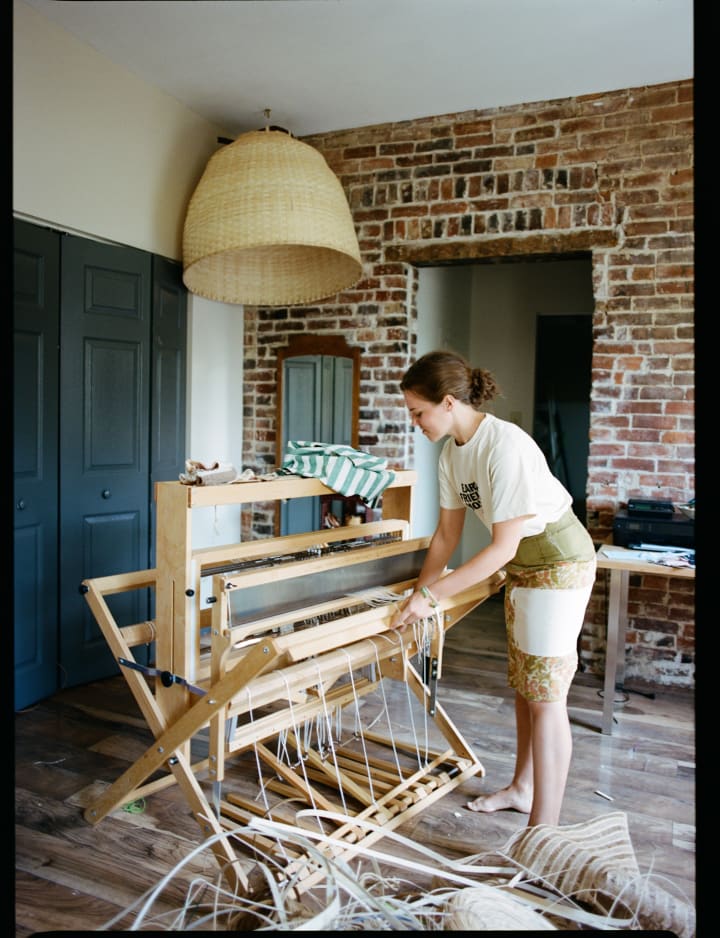

I entered my senior year of college more at home in my creativity than ever before. The most loving kind of home, where you find as much joy as you do comfort and there is always room for more. Where I had once used creativity to mask fears, I was now embracing them. There was no ‘right’ or ‘wrong’; there was trying anything I was curious about, trusting that it would work out, and letting it. It was balance in energy from my head, heart, and hands. It was 3 year old Emily again, but with more skill and direction. As I opened my mind to what was possible and let intuition to take over, I was surrounded by opportunities. This was when my fabric shears met wire cutters and reed cutters met thread trimmers. I turned burlap sacks into a jacket, paper bags into a shirt, iron beads into cuff links, a basket into a skirt. Literally nothing was off the table, because it wasn’t about exclusive choices; it was, and continues to be, finding belonging in everything. These transformations form unreplicable character that can’t be substituted by technical perfection; it’s about embracing the moments of surprise and finding ways to harmonize them with craftsmanship. In this process, I’m reminded of the infinite beauty that’s available if I see diversions as opportunities instead of flaws.
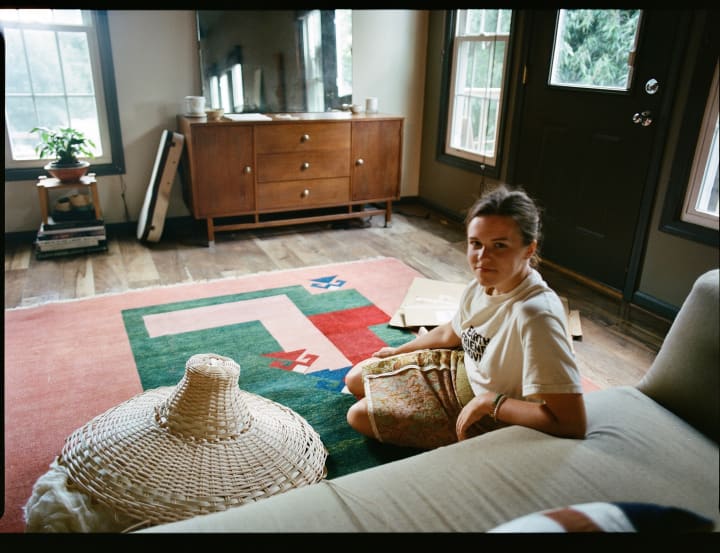
As a maker who is always interested in discovering something new, I perpetually wander into different disciplines. For a while, like when I almost wanted to transfer into ceramics or culinary arts, I perceived my diverse curiosities as lacking direction. Sometimes I do need to focus on one project at a time, but now I tend to see all of my interests as strengths. My knowledge in ceramics has led me to make buttons and beads for clothing. My delight in food has inspired me to learn about natural dyes for fabrics and reed. Whether a piece ‘succeeds’ or ‘fails’ seems to have more to do with intention than using a material as it conventionally functions. It comes back to honoring the nature of an object; remembering that sustainable growth can’t be forced, and that beautiful things organically form if you tend to them with respect and love. I most often work with discarded materials as a means for, yes, eco-conscious recycling, but especially to transform seemingly non-precious objects into something greatly cared for. Working with pieces found on the street or in thrift stores is exciting to me because they feel both fresh and familiar. I keep all of the reclaimed and passed down materials scattered around my studio until they find their place; I can’t time it or usually even form an expectation for the material. But if I’m open to the opportunity for something good to happen, it will.


Creation of the basket skirt quintessentially describes my process and values as a designer. It was the first garment I created for my senior thesis collection, and born out of sheer wonder. My grandmother, Judy, is a basket-weaver. I came to her with the idea, and our combination of skill, problem solving, and imagination brought it to life. It is one of many examples in my work that combines multiple crafts and materials into one piece. In this case: basketweaving, clothing construction, leatherwork (for the belt), and the weird ingenuity (or scrappy craft, depending on your perspective) of figuring out how it all comes together. The basket skirt maintains many traditional, familiar qualities as of a basket, like the weaving pattern and bamboo reed, it’s just also a skirt. That’s my favorite kind of piece to create: you recognize it, but not in this way.

The basket skirt reminds me to remain loyally authentic in my expression. Is it coincidence that this piece that brought me so much joy to create is also the piece that has resonated with so many others? The basket skirt has connected me in ways deeper and more expansive than I could have ever imagined. I could try to provide critical theory on why it invites people in, but I’d rather leave it at ‘joy.’ You have joy, you share joy, you receive joy back.
As I move forward in exploring my goals as an artist and designer, prioritizing a creative practice while also meeting logistical needs can feel unrealistic. Society isn’t set up to encourage creativity for the sake of it. However, the peace I know in creating is real and vital. Creativity as safety and freedom means, above all, space to be authentic. It is endearing and sometimes sore to look back on my work because it is such an accurate depiction of myself, but when I do so with grace, I’m met with more love for myself, for my work, and more love for others. When I see the world through the lens of my at home, creative self, an expansively beautiful and accepting world reflects back.
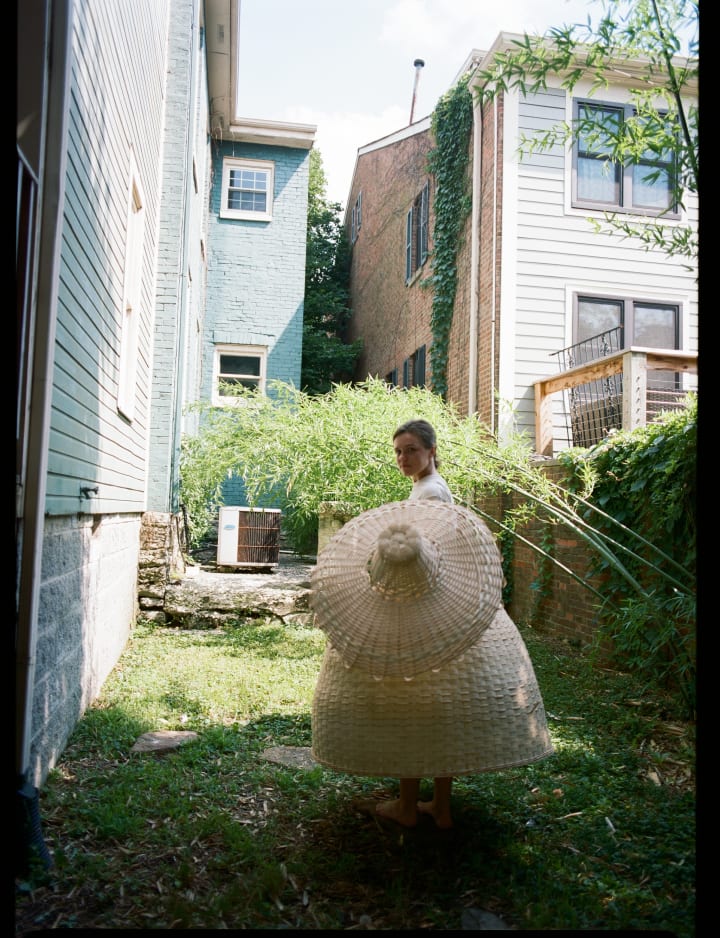
About the Creator
Emily Ridings
Emily Ridings is a designer & artist. Her work explores unconventional applications of traditional craft, manifesting in clothing & woven objects. There is a narrative throughout every piece, fusing past with present & skill with curiosity.


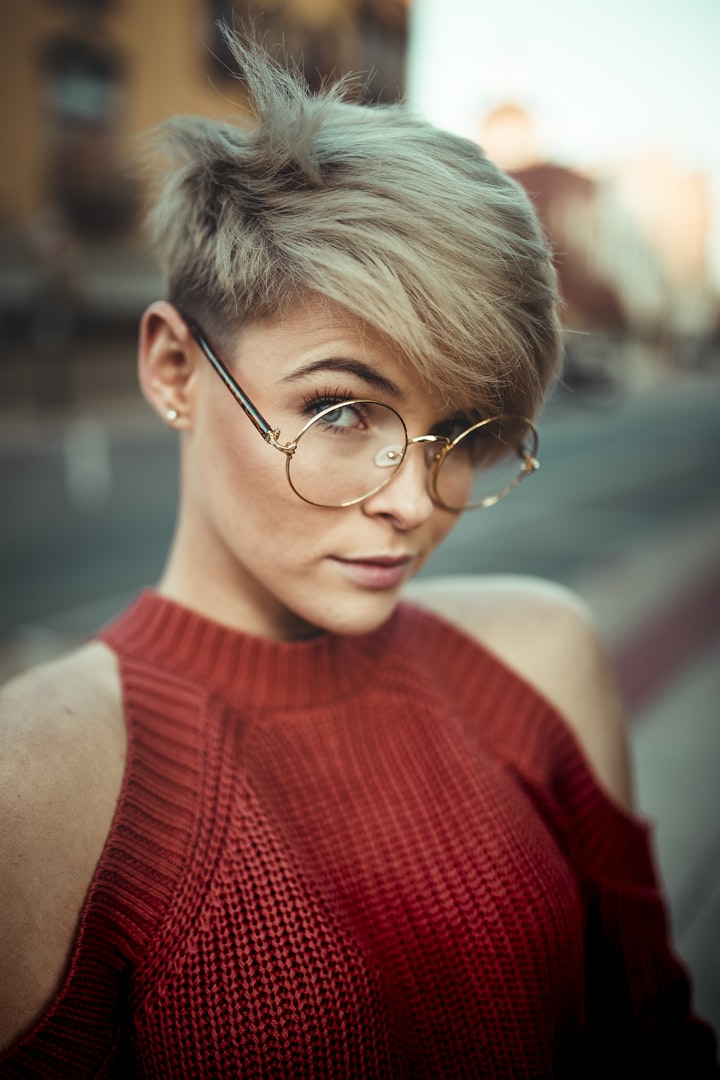
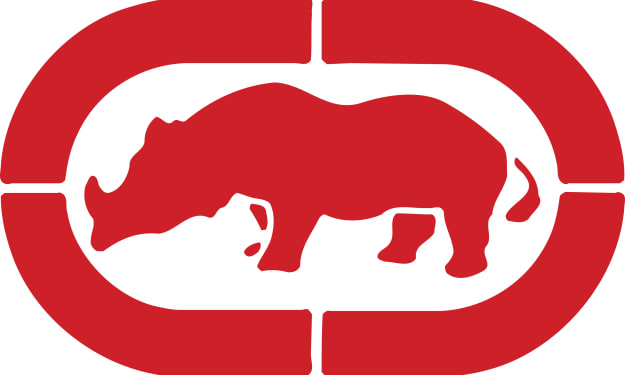


Comments
There are no comments for this story
Be the first to respond and start the conversation.